
Great poem for Onomatopoeia Teaching themes, Elementary schools
There are many examples of onomatopoeia in poems. This lesson gave you one short example about fireworks, but see if you can find some others. Read some onomatopoeia poems carefully..

onomatopoeia poem examples Google Search Onomatopoeia poems
Perhaps the most famous example of this type of onomatopoeia is Edgar Allen Poe's poem "The Bells," in which Poe repeats the word "bell" 62 times to evoke the sound of a bell ringing and tolling, even though the word "bell" itself does not itself sound like a bell ringing. Made-up Words that Sound Like Real Things
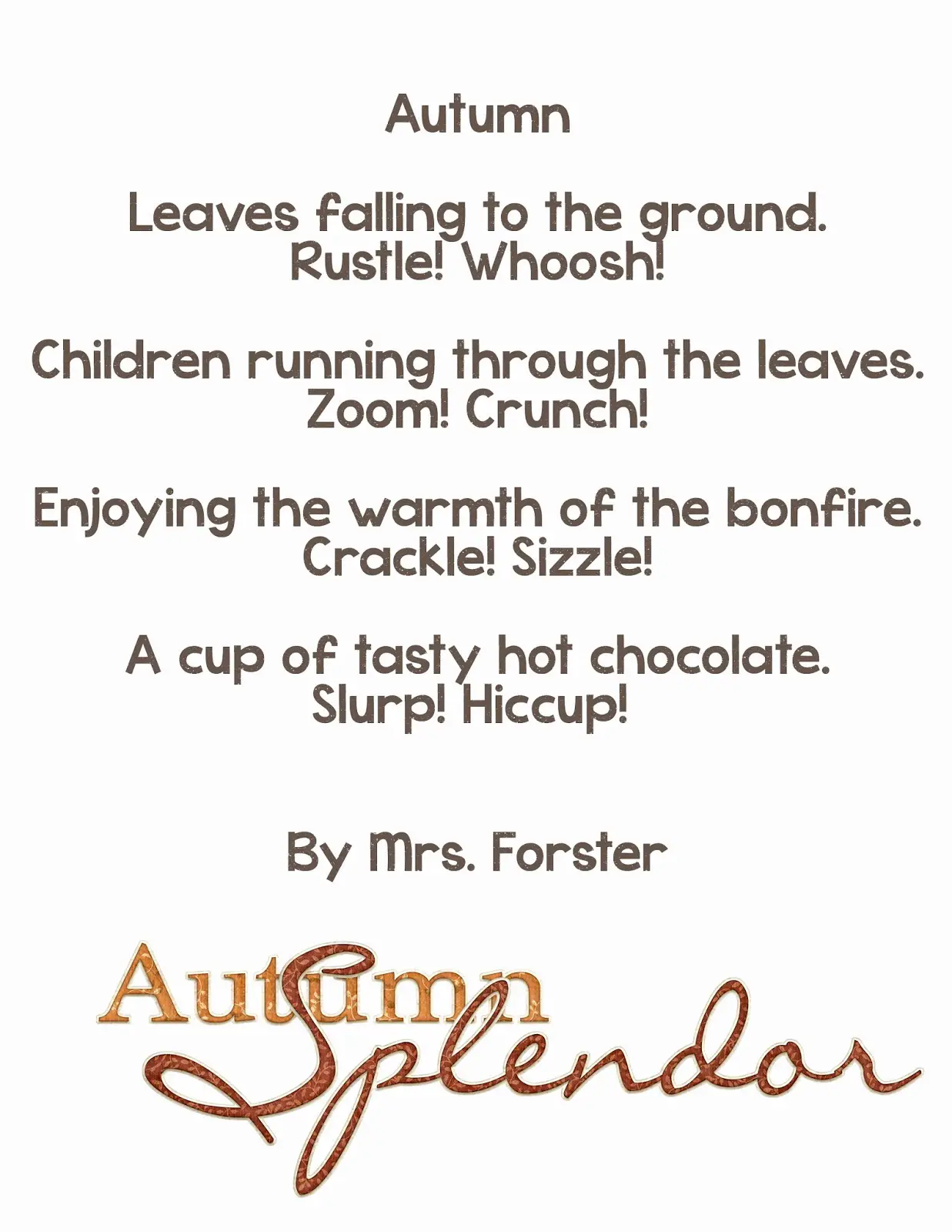
Short onomatopoeia Poems
Onomatopoeia is a figure of speech in which a word imitates the sound associated with an action or an object, effectively mimicking the sound it describes. Some examples of onomatopoeia are "buzz," "whack," "clang," and "cock-a-doodle-doo."
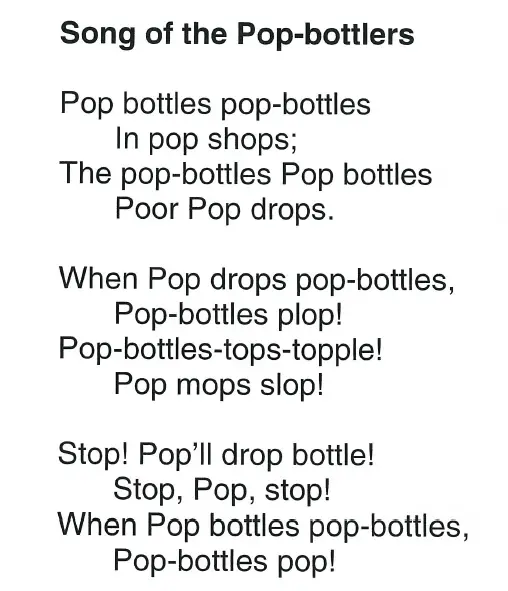
Short onomatopoeia Poems
Explore the glossary of poetic terms. Onomatopoeia is the use of language that sounds like the thing or action it describes. History of Onomatopoeia English author Henry Peacham first used the term Onomatopoeia in his 1577 book on grammar and rhetoric called ''The Garden of Eloquence."

Teaching Onomatopoeia Poems For Teenagers High school english
Emily Dickinson describes the sounds she hears as she's dying in her poem "I heard a Fly buzz - when I died -." The sound of the "buzz" is an onomatopoetic word. She also describes a "stillness in the room." The use of onomatopoeia to begin her poem creates an auditory landscape, which she then fills with other imagery. Example #6
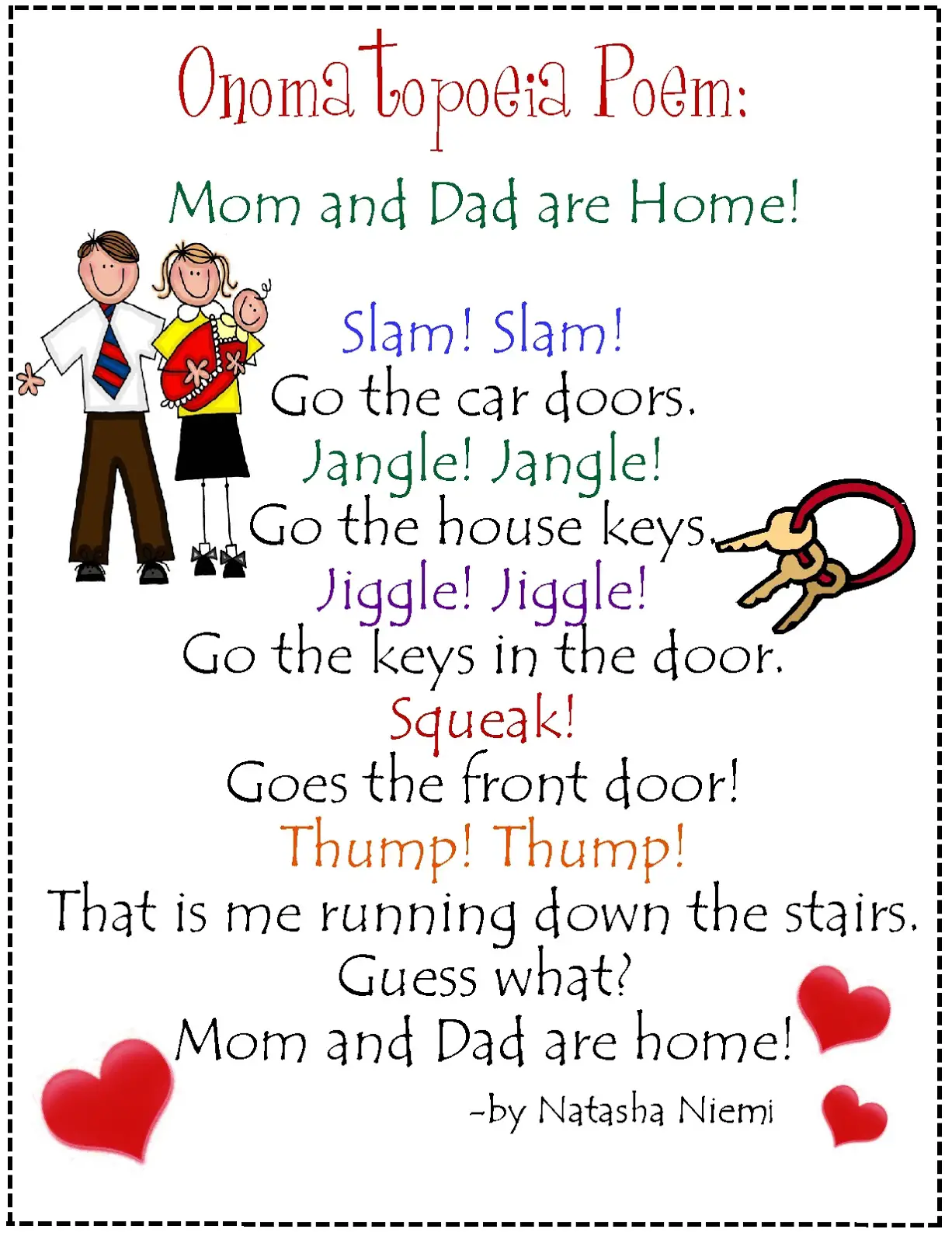
Short onomatopoeia Poems
Onomatopoeia in Poems. Poets and musicians use onomatopoeia in their work in two main ways: directly and indirectly. One way is to directly or obviously use an onomatopoeic word to create atmosphere for the reader. The other way is less obvious, where words or parts of words that are used to create an onomatopoeic device, which is usually a pun, in a poem (some examples of this is given below).
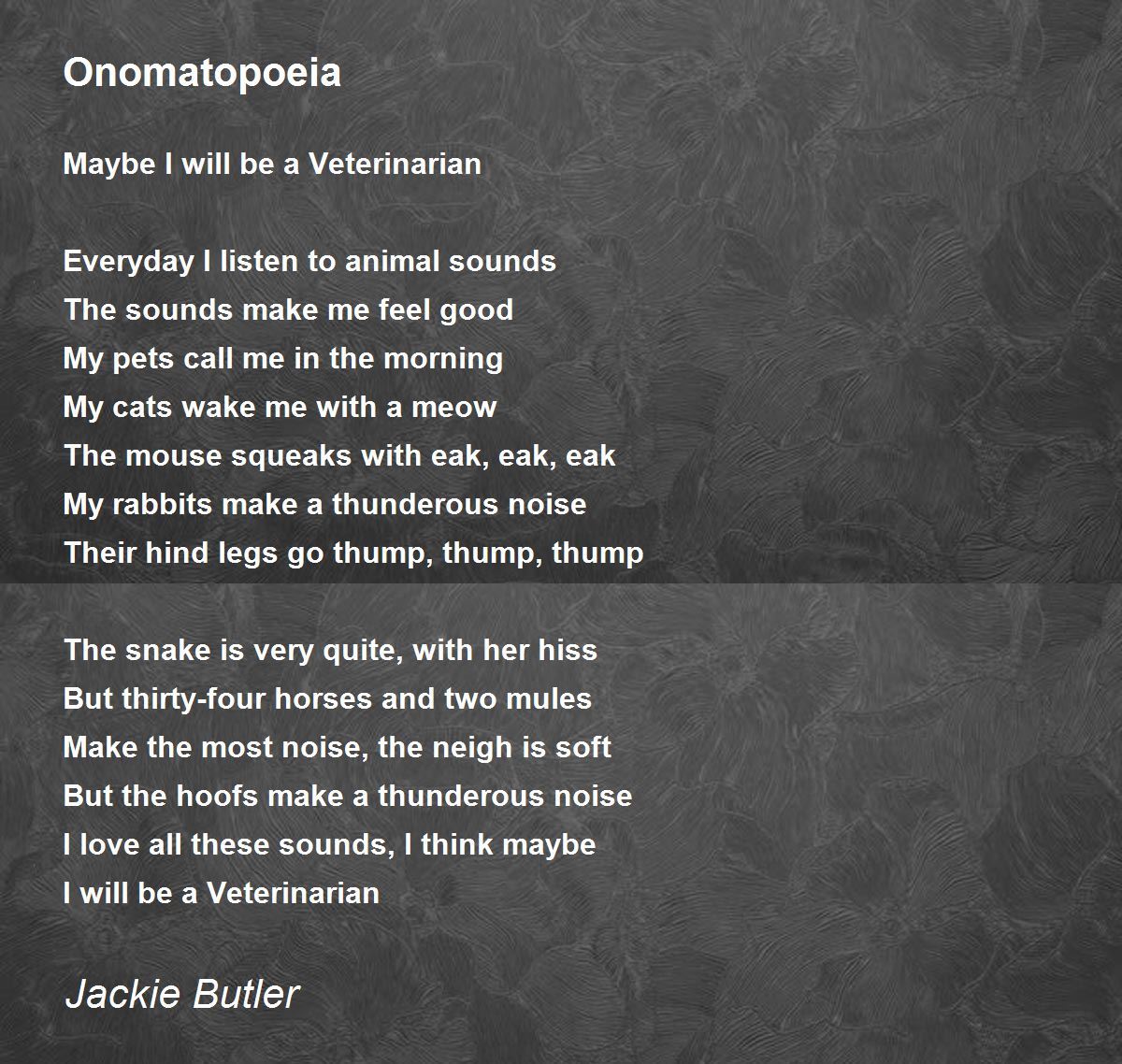
Onomatopoeia Onomatopoeia Poem by Jackie Butler
Onomatopoeia is a way of increasing the poignancy of imagery in a poem, short story, or novel. These words help readers hear the sounds of words they represent. This should also mean that the reader is taken deeper into the story and is more willing to suspend their disbelief.
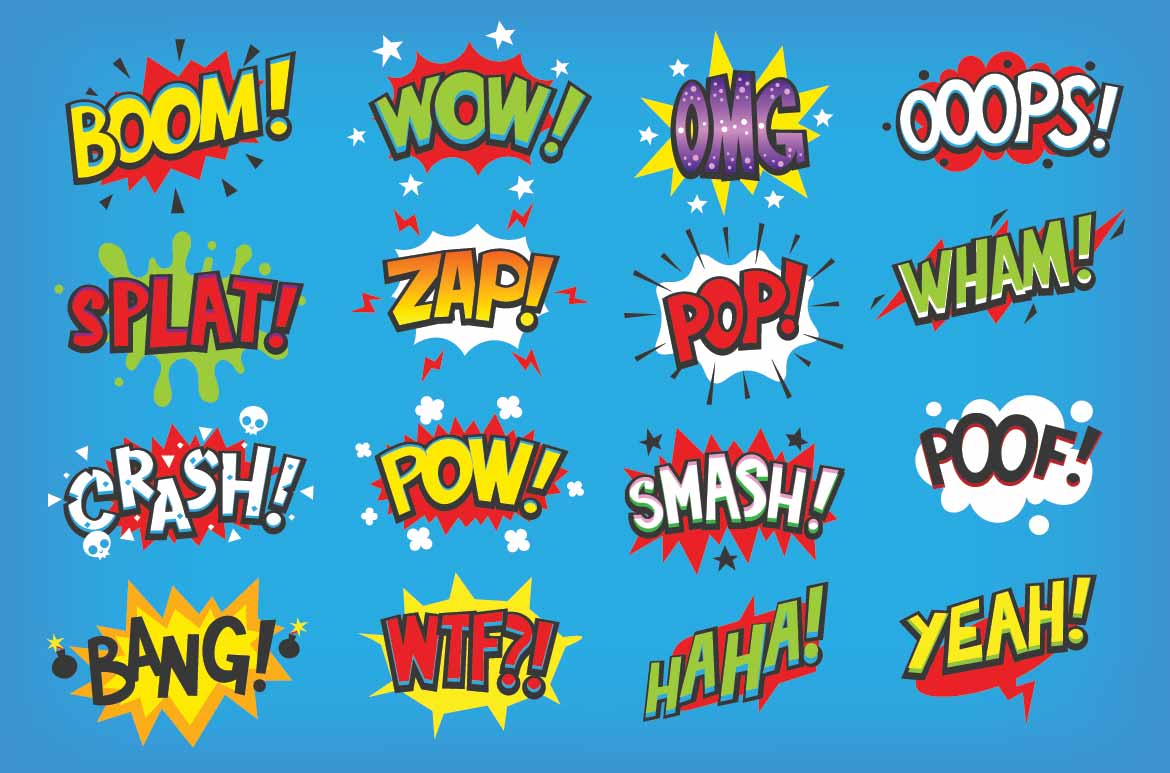
56 Fun Onomatopoeia Examples Teaching Expertise
Onomatopoeia is the use or format of words whose sounds imitate their meanings (ex: buzz, honk, boom). Shout it Out Loud. Onomatopoeia is an awesome poetry device because it adds depth to writing, but the sounds can only be heard when you speak them. Hear the difference for yourself: read the word "woof." Now try speaking it. Now a little louder.
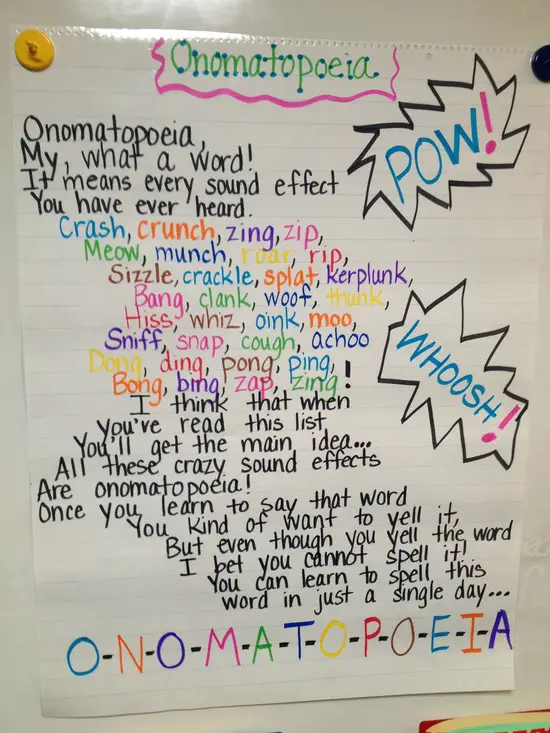
Onomatopoeia Poems
Not only does the word burst show the use of onomatopoeia, but the repetition of the "f" and "s" sounds creates the feeling of waves crashing on the shore. Sometimes, in this way, alliteration can become onomatopoeia. 7. The Raven by Edgar Allan Poe. Poe again masterfully uses onomatopoeia in his poem The Raven. This excerpt is a good.

onomatopoeia poem Poetry ideas, Poetry for kids, Teaching poetry
Onomatopoeia Poems What are onomatopoeia poems? They are poems that make use of onomatopoeia, those words that sound like what they describe…for example: bang, boom, crash, tinkle, crinkle, pop, crack, sizzle, and so many more. These words paint both a visual and a sound picture for the reader.
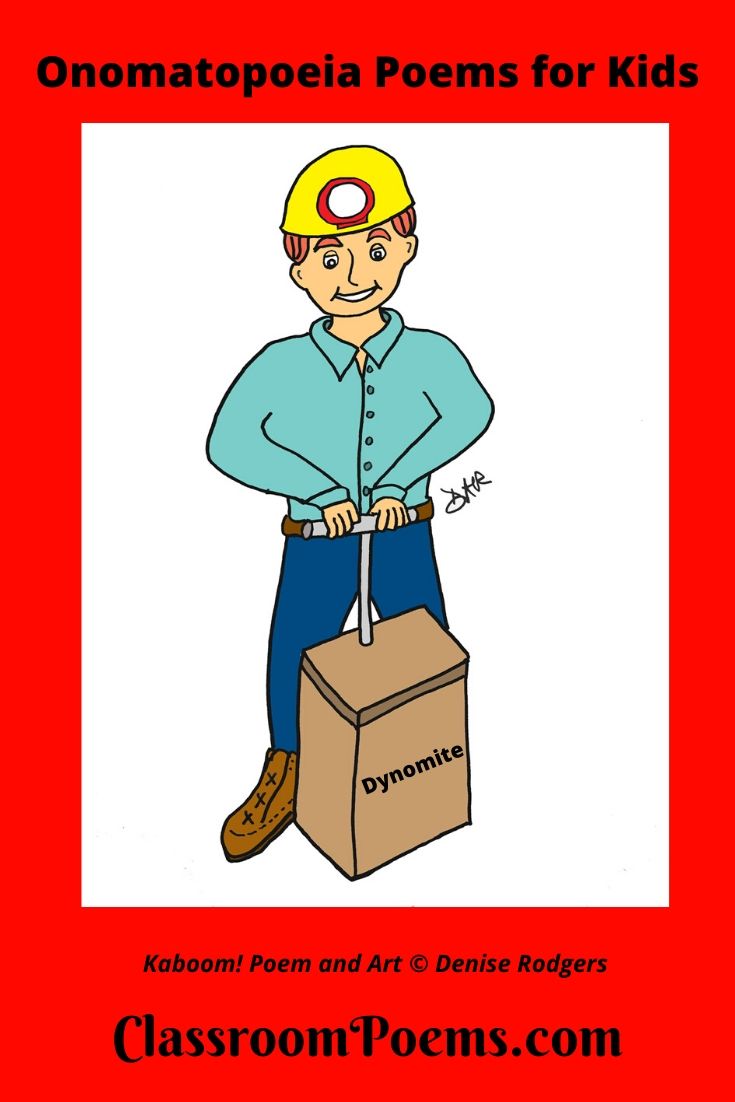
77 Awesome Onomatopoeia Poems for Kids Poems Love For Him
Onomatopoeia is a poetic device that involves the use of words that imitate sounds. This technique can be found in famous poems such as Edgar Allan Poe's 'The Bells,' where the sound of the bells is repeated in the onomatopoeic words 'tinkle,' 'clang,' and 'moan.'
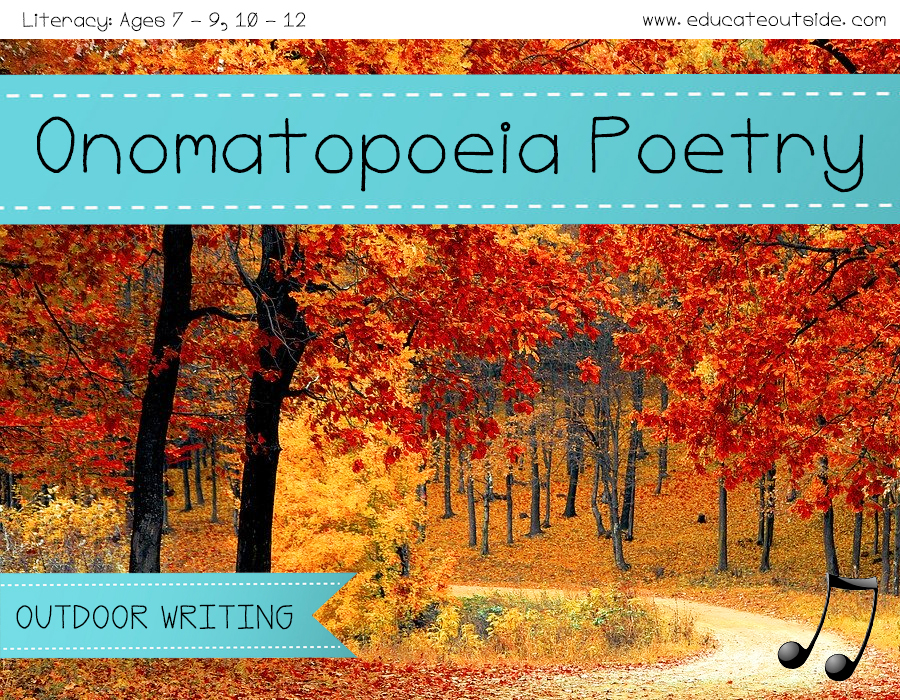
Onomatopoeia Poetry Educate Outside
Poetry 101: What Is Onomatopoeia? Learn How to Use Onomatopoeia in Poetry and Literature With Examples - 2024 - MasterClass Usually, how words sound bears no relationship to what they mean. That's not true in the case of onomatopoeia, where words sound like what they are.

Great poem for Onomatopoeia Dr Seuss Pinterest
Categories: onomatopoeia, nonsense, silly, Form: Limerick. Onomatopoeia. The time of the clock, The ships are in the dock, The whistle of the wind, Through the haughty tamarind, Now I can't think 'cause it's summer, don't mock. 06/09/2020.
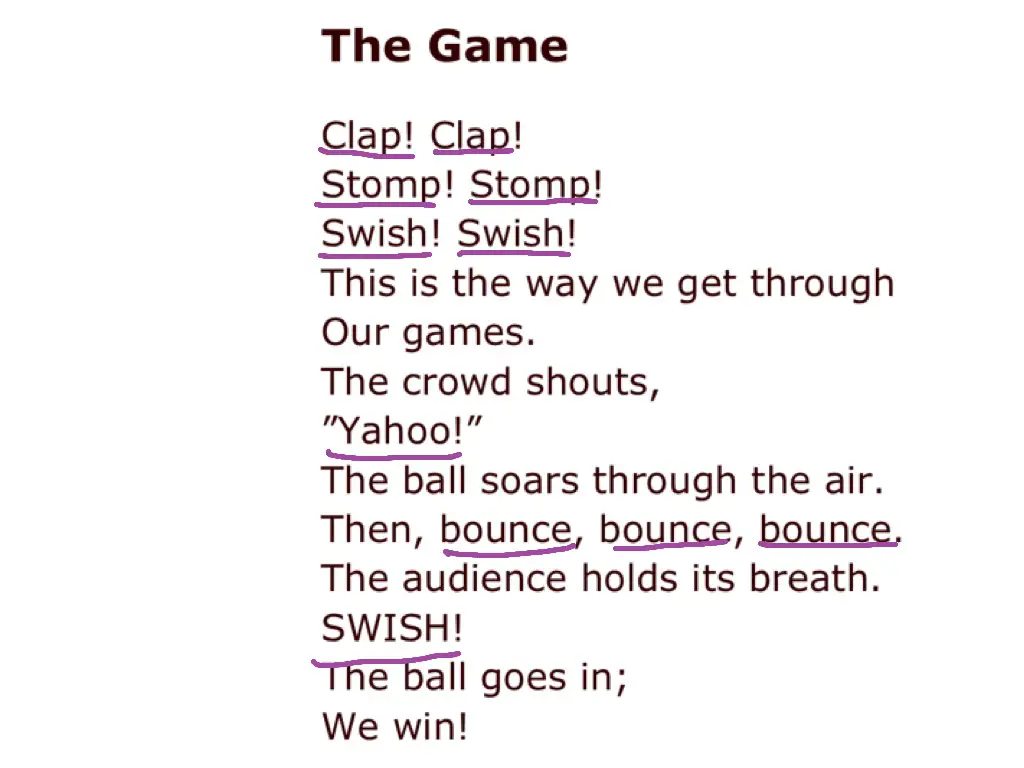
Onomatopoeia Poems
Onomatopoeia is often used by poets because it allows the reader to visualize the scene by creating a multi-sensory experience, all with words. Readers don't just picture the scene, they hear the sounds in nature or feel the chill in the air — as these examples, from the classics to modern verse poems with onomatopoeia, demonstrate. Advertisement

Onomatopoeia poemThe Game Onomatopoeia Onomatopoeia poems, Poetry
By the end of this guide, you should be able to: Know what onomatopoeia is, but simply knowing the definition is not sufficient. Identify examples of onomatopoeia in poetry on your own. Explain the purpose of the onomatopoeia and analyze how it contributes to the theme of the poem.
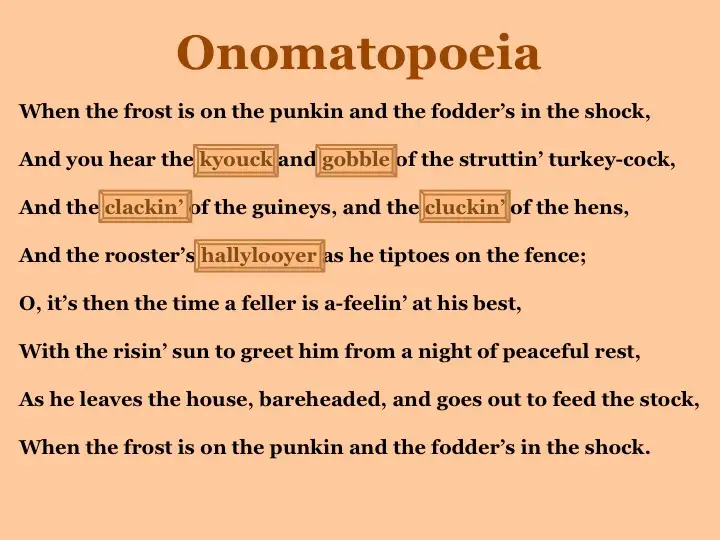
Short onomatopoeia Poems
Onomatopoeia is a literary device that uses words that imitate sounds, and it can be a lot of fun to play around with in poetry. From the sizzle of bacon to the purr of a cat, onomatopoeia helps bring words to life and add an extra layer of meaning and emotion to your writing.